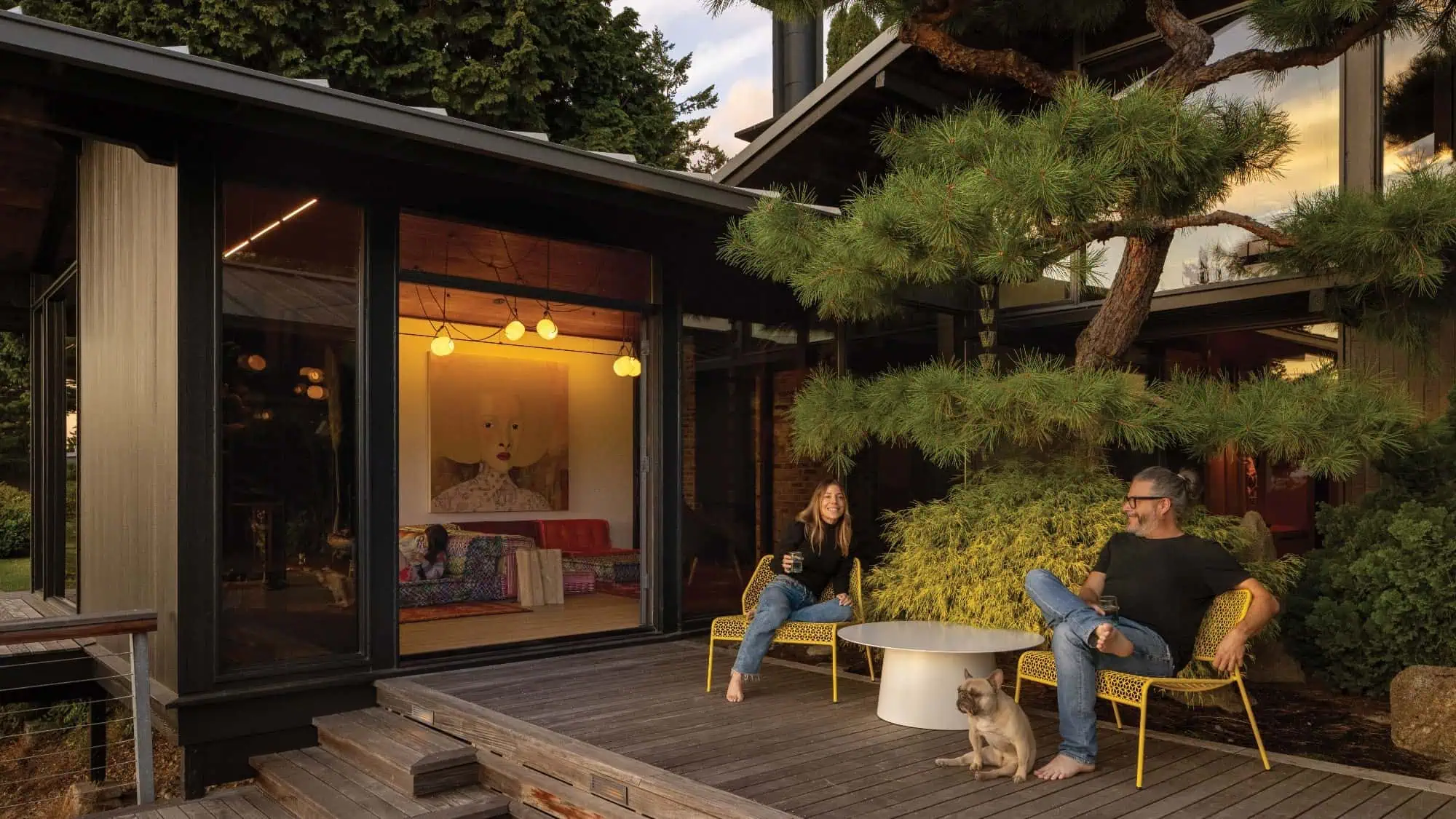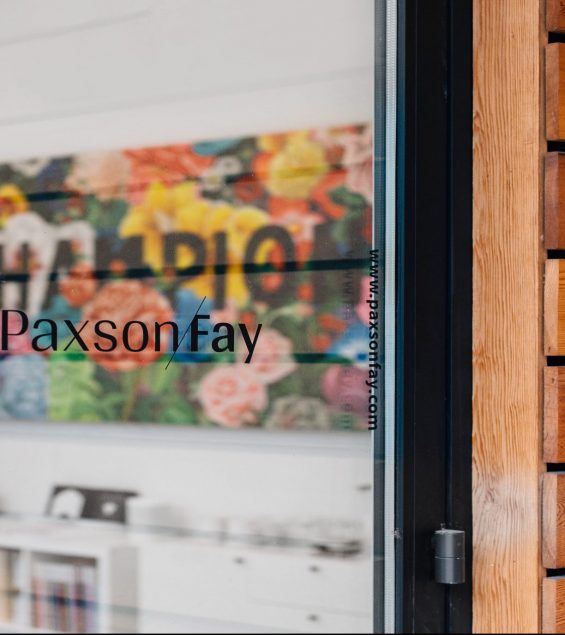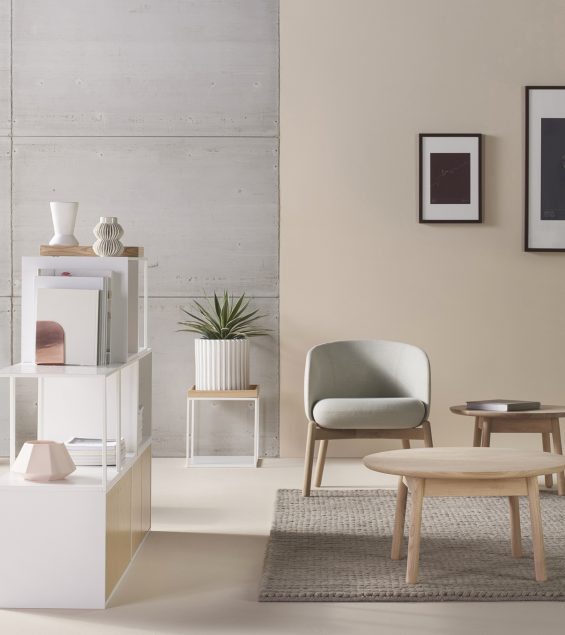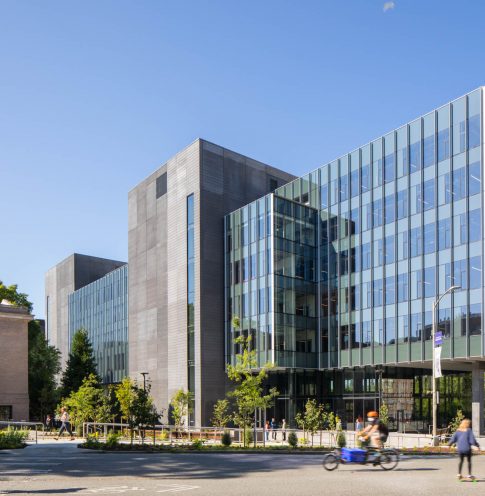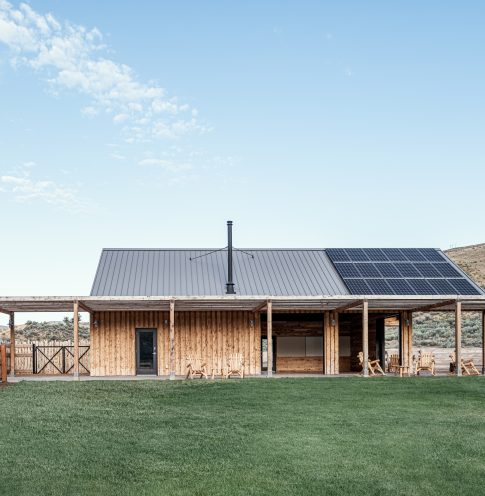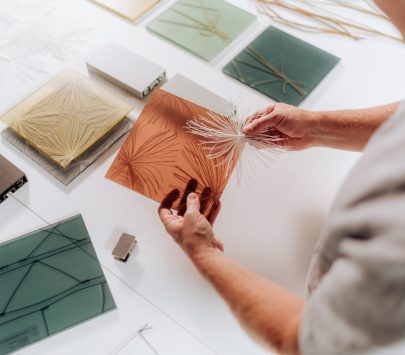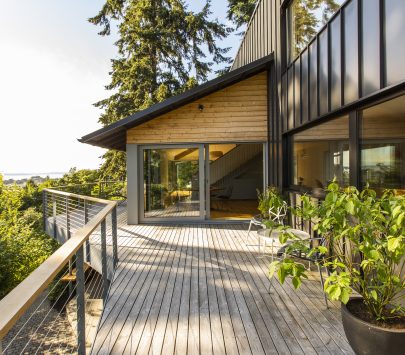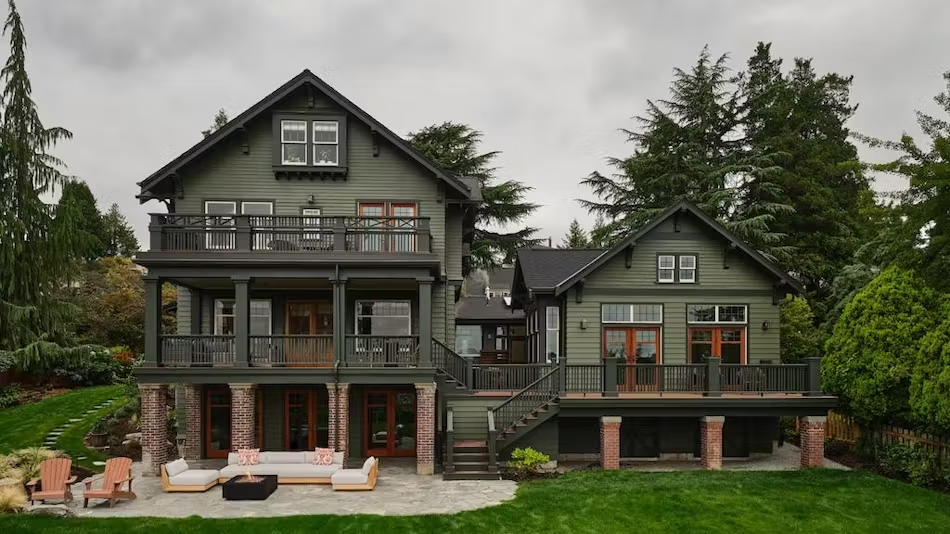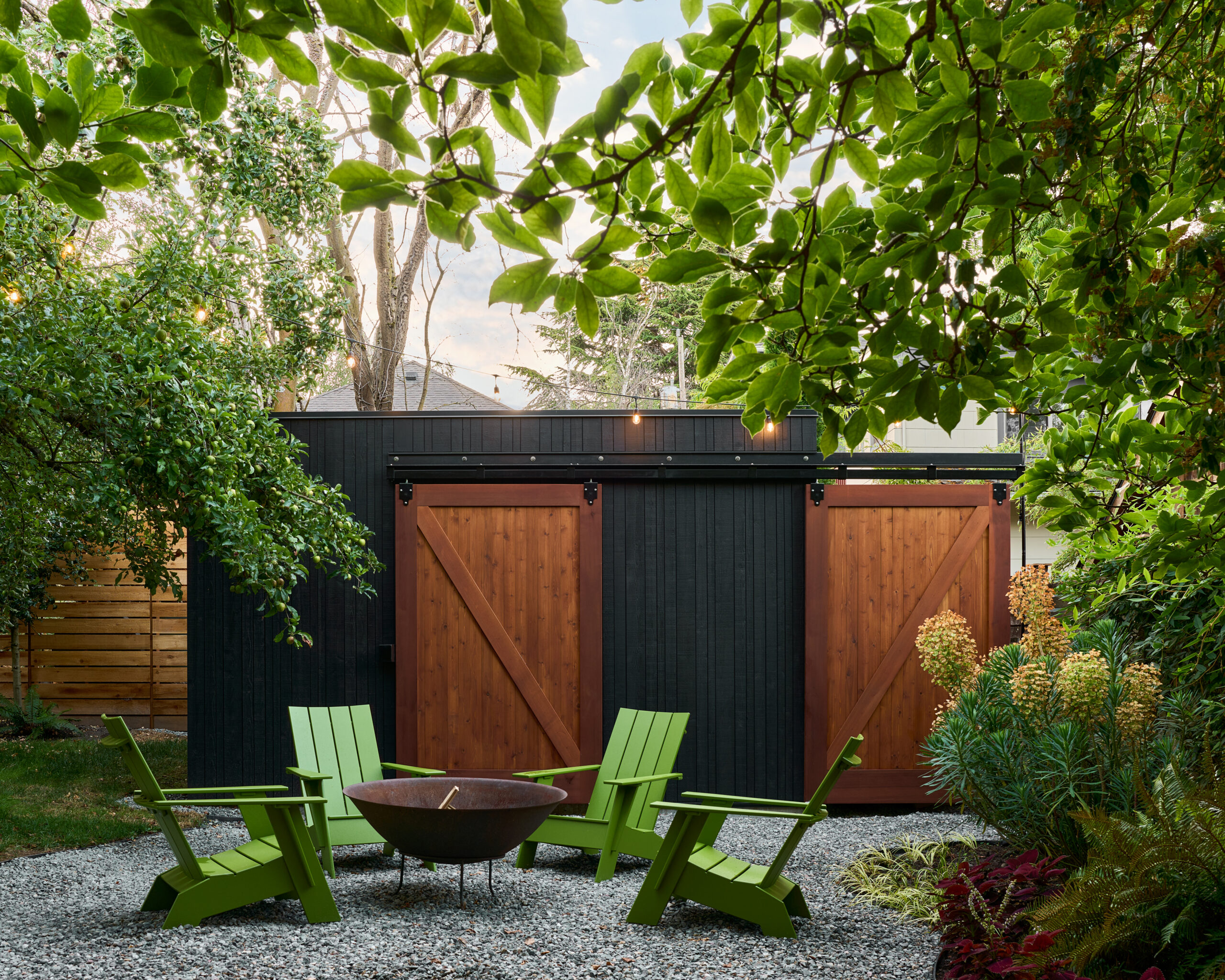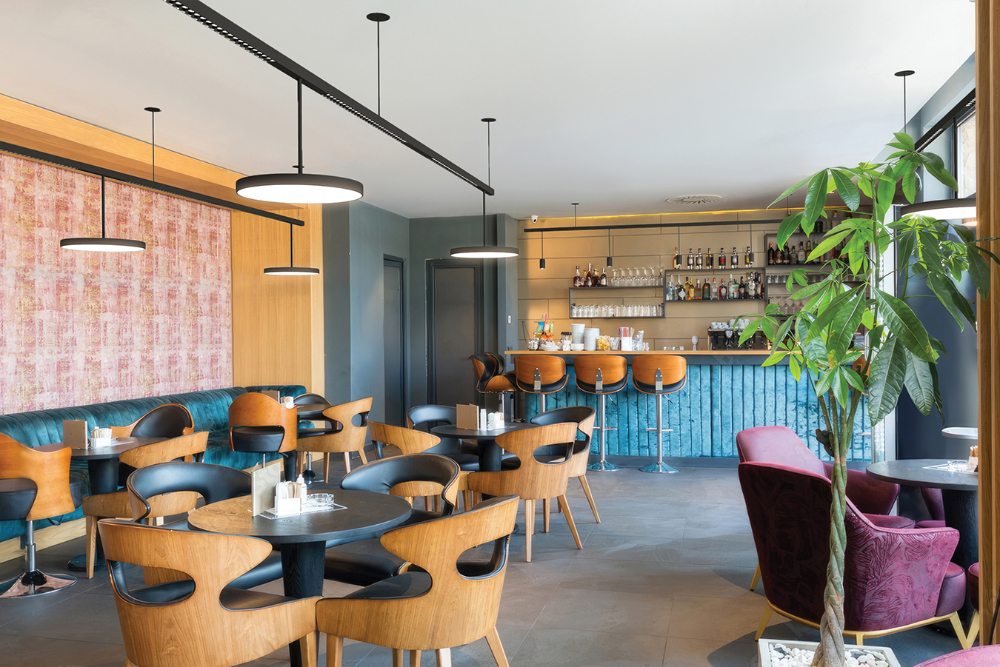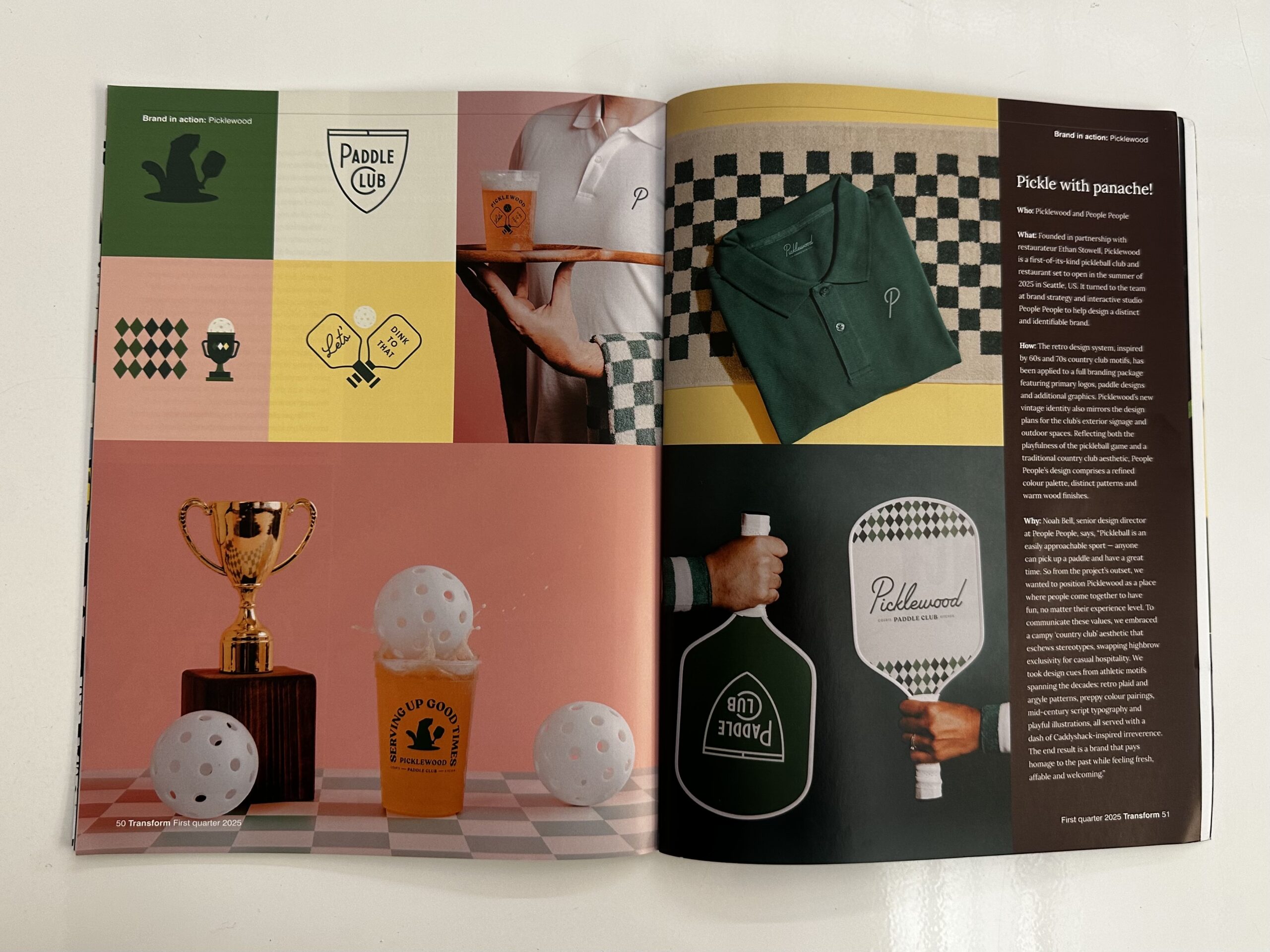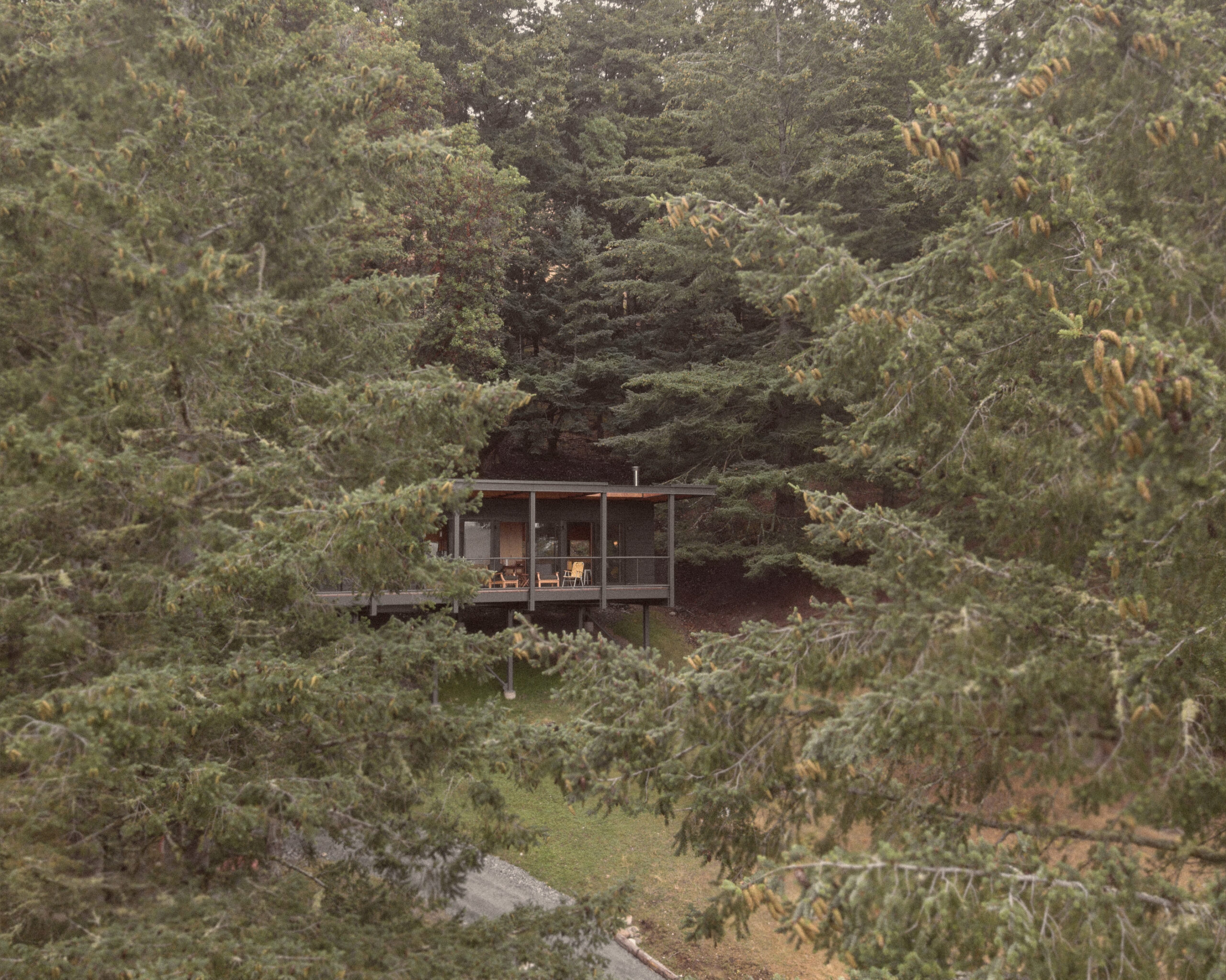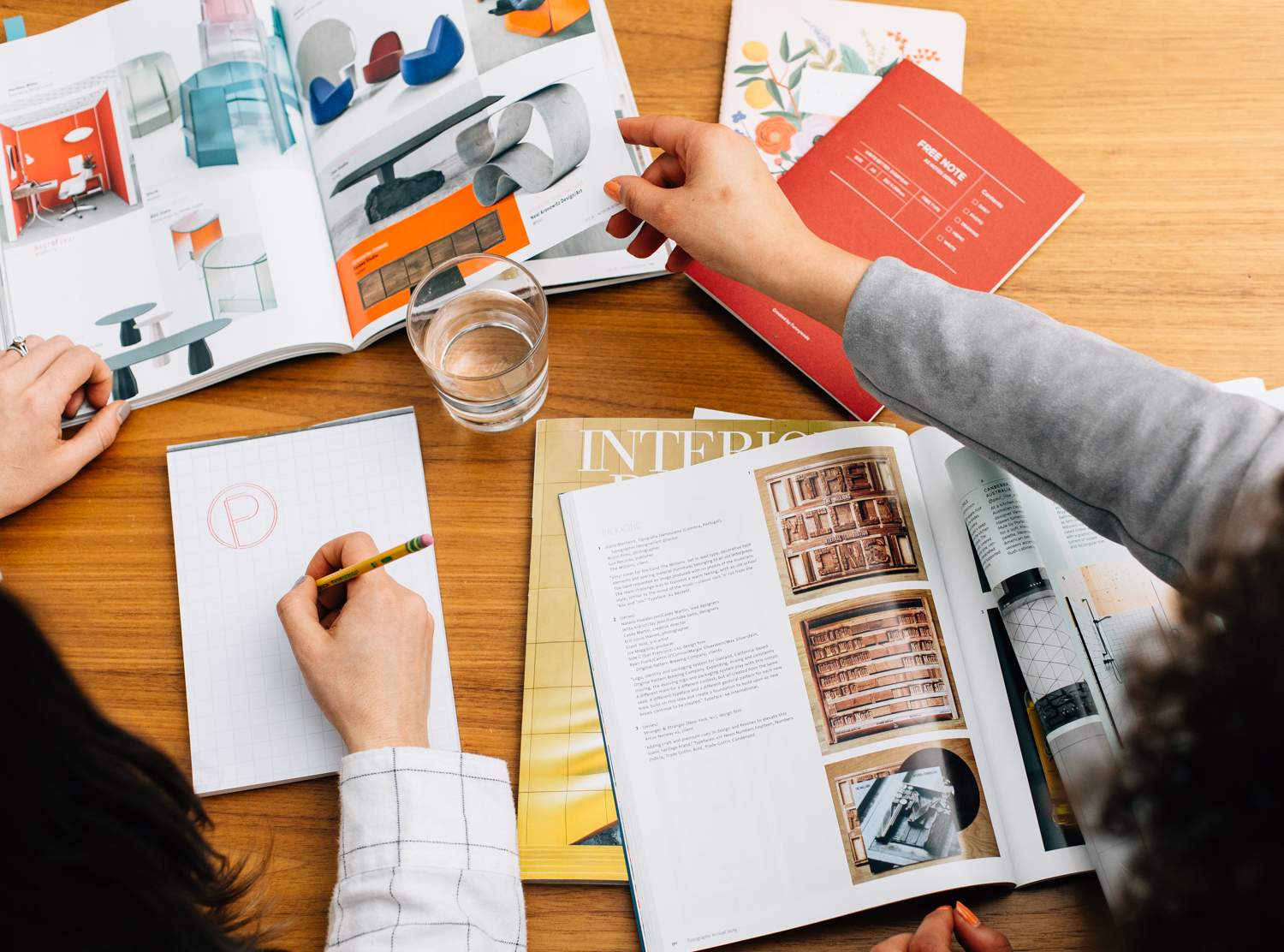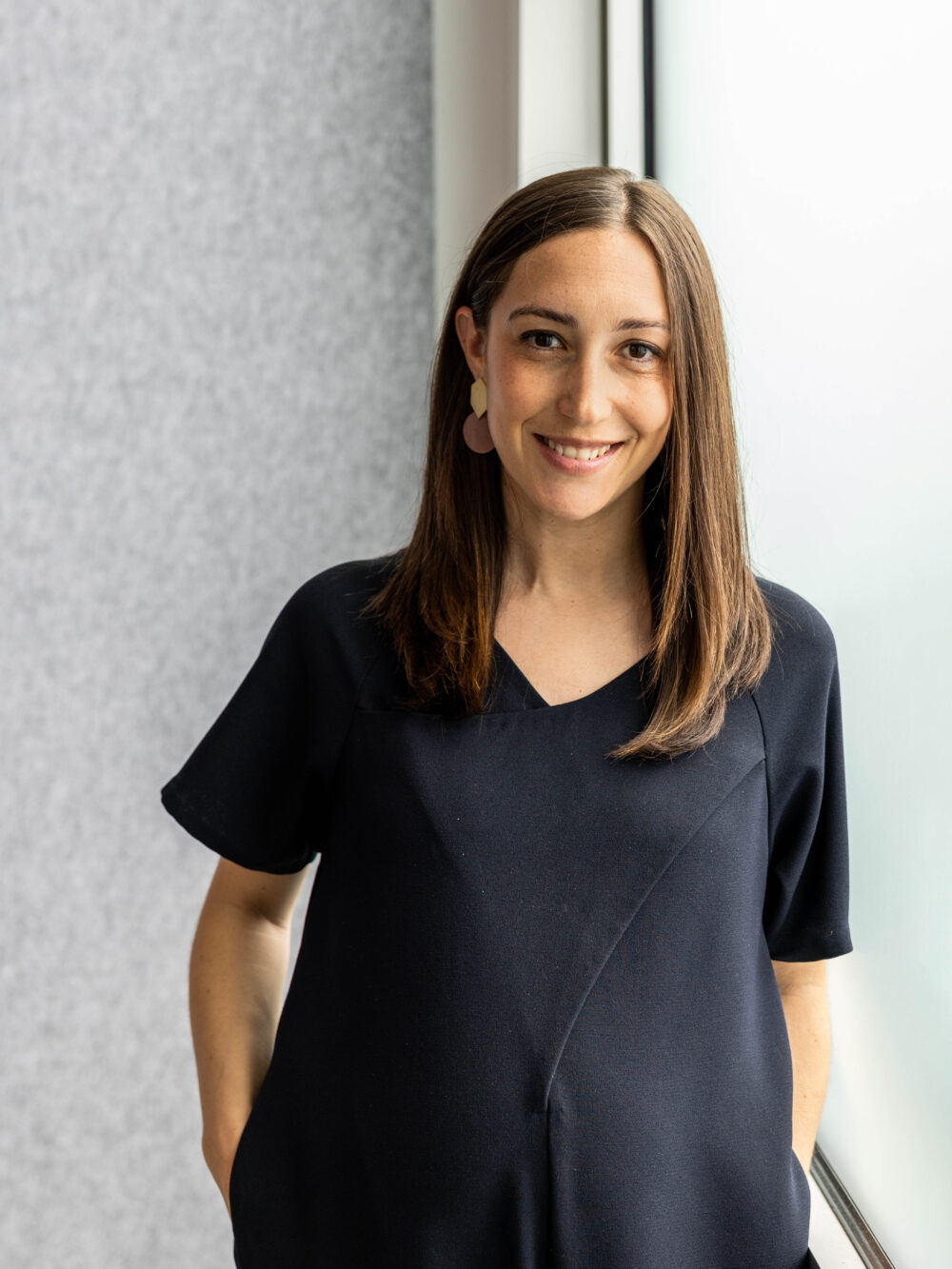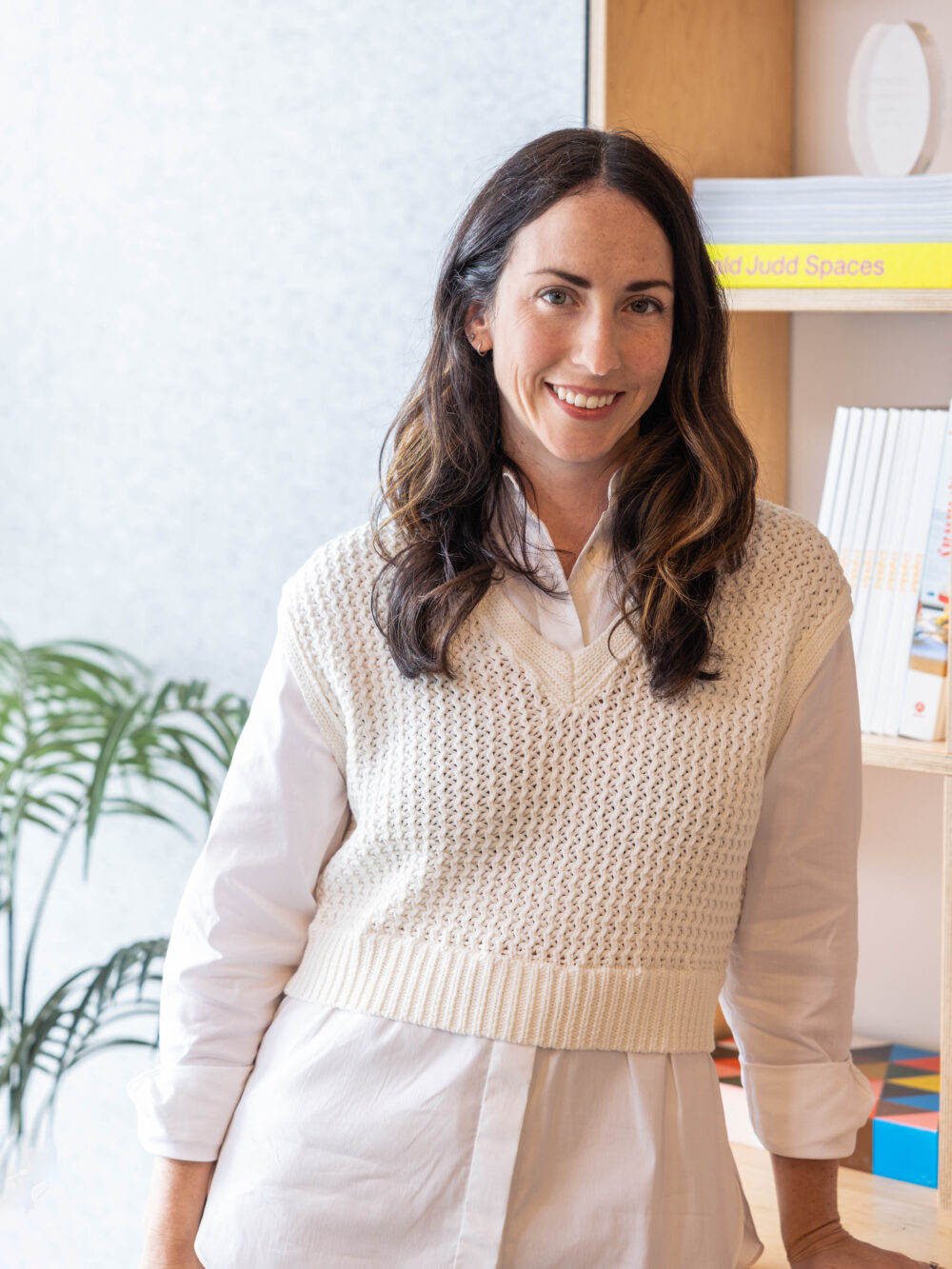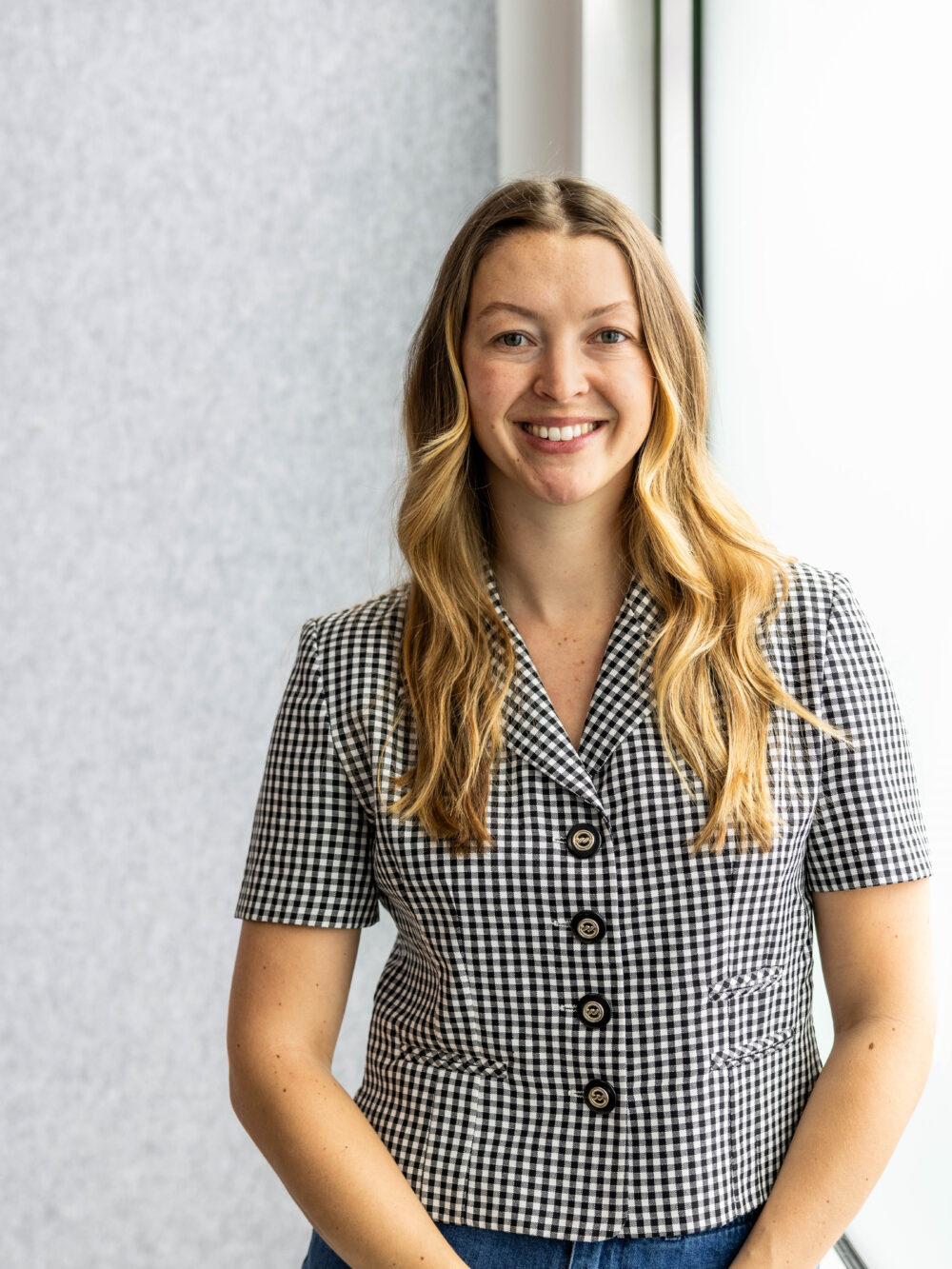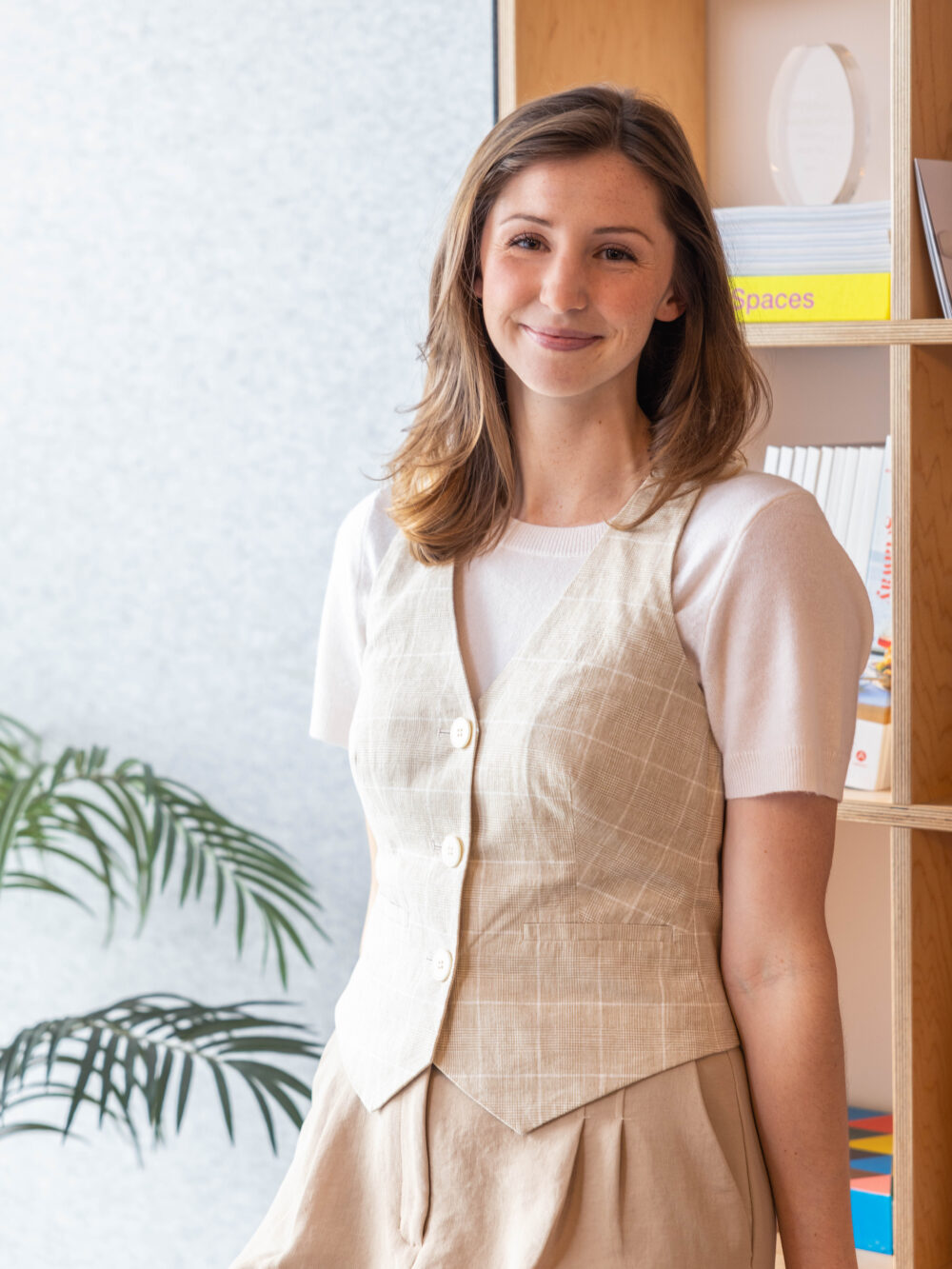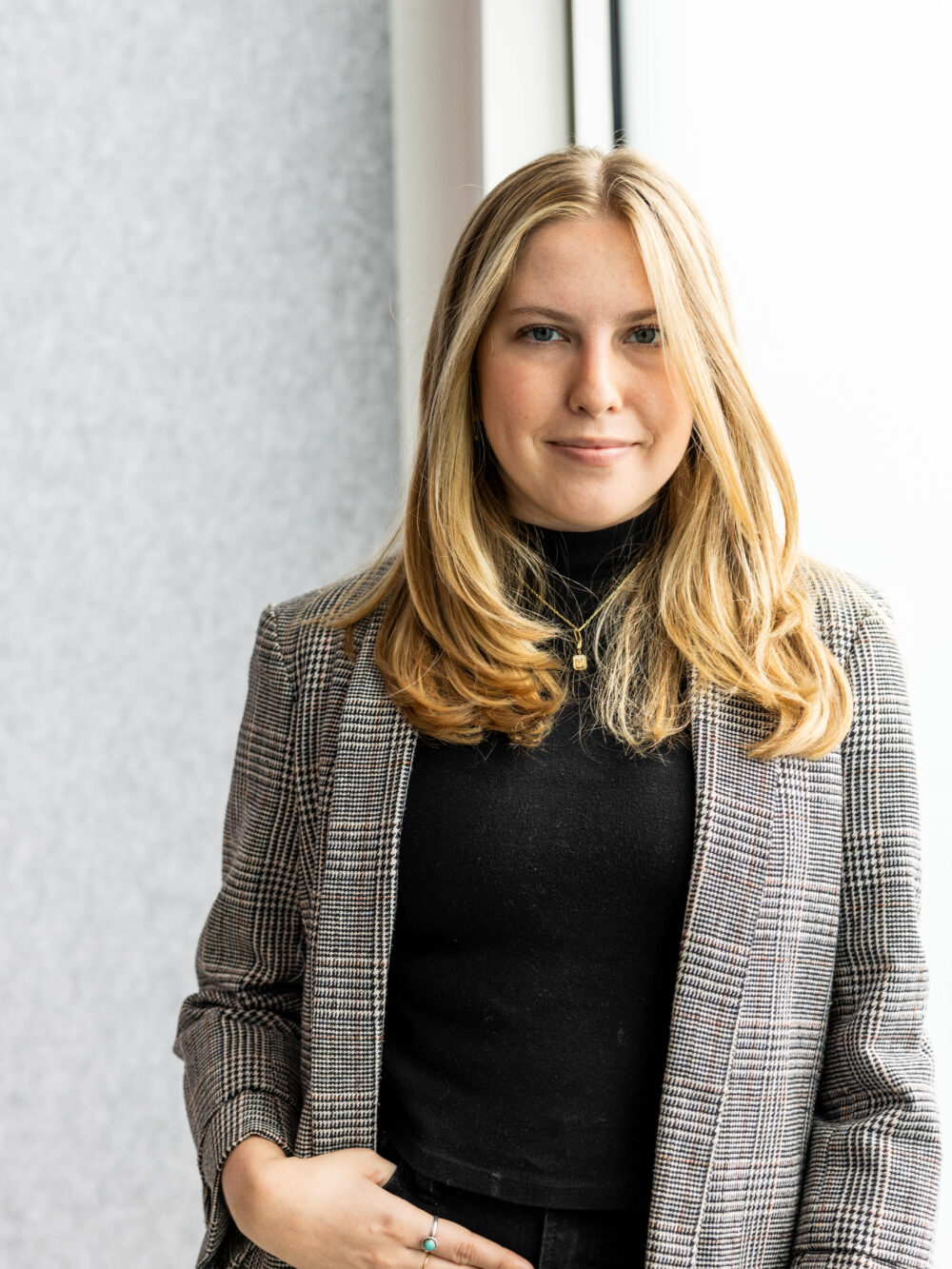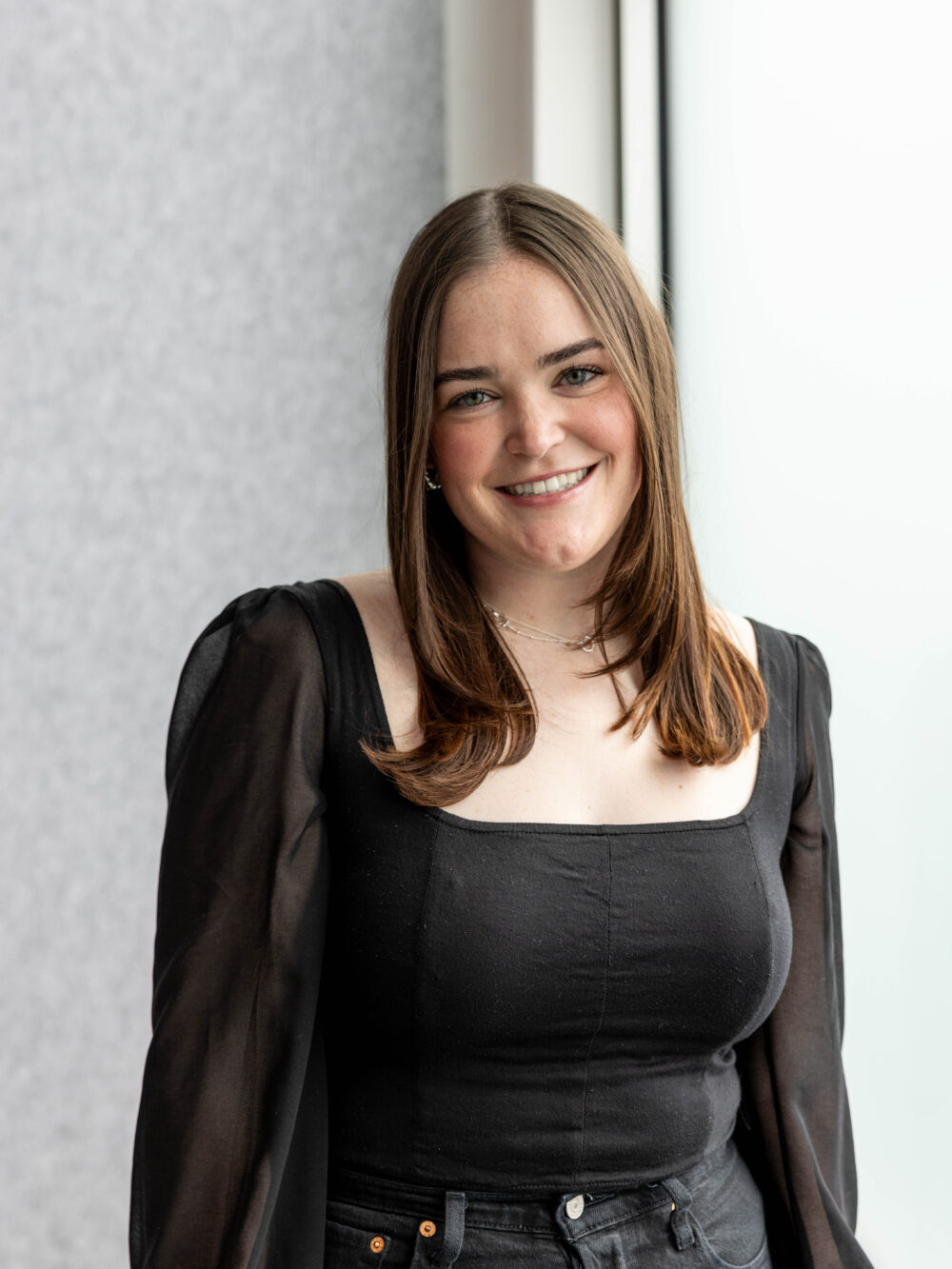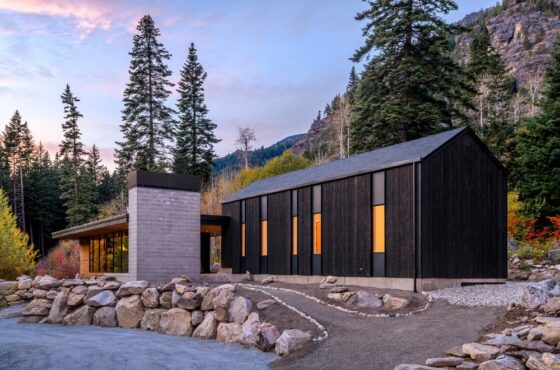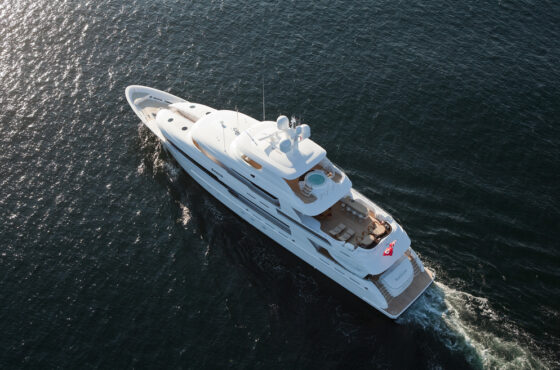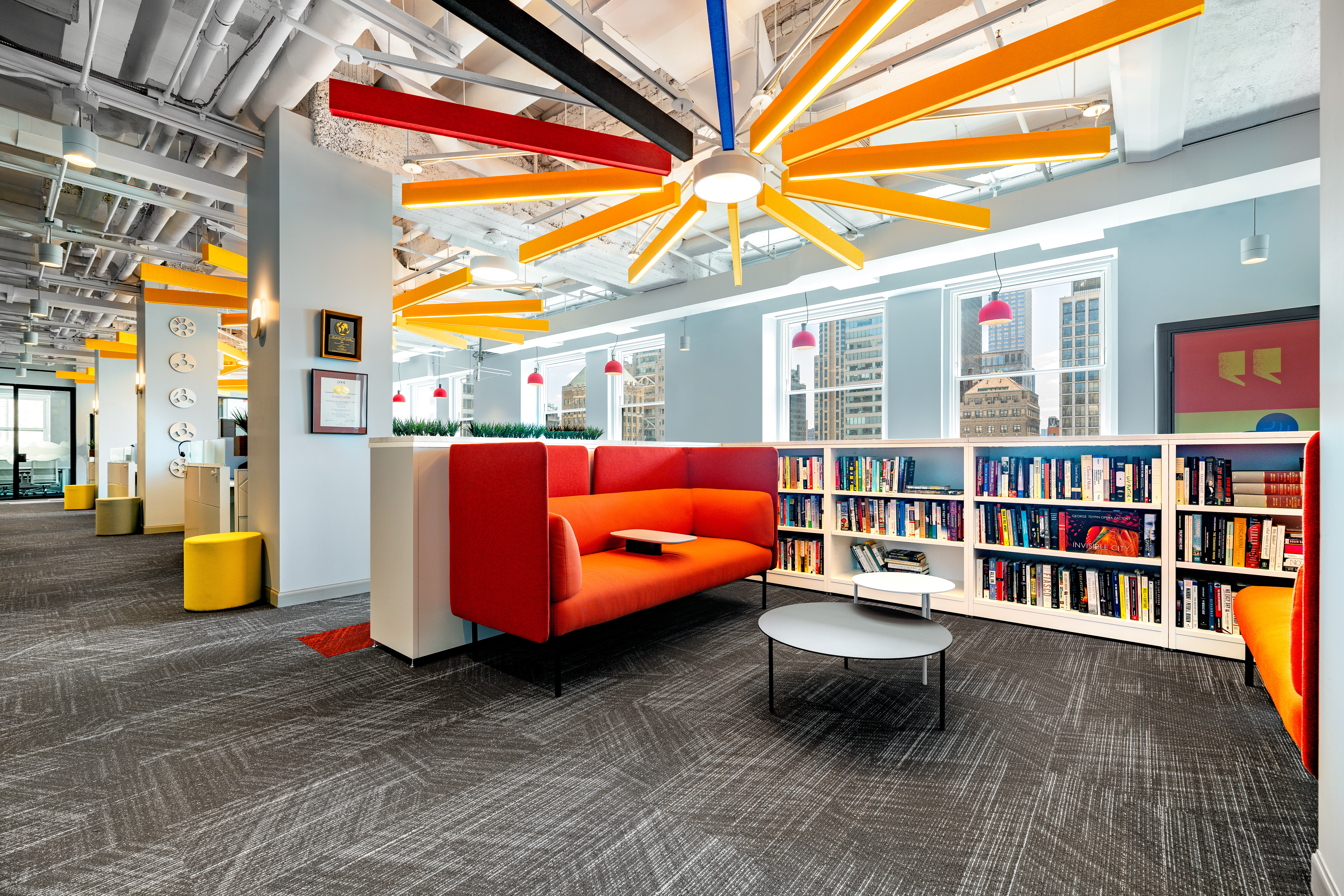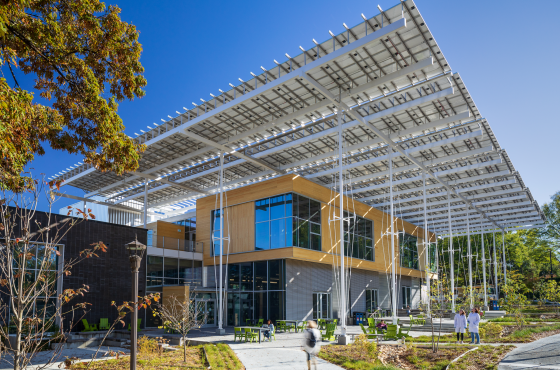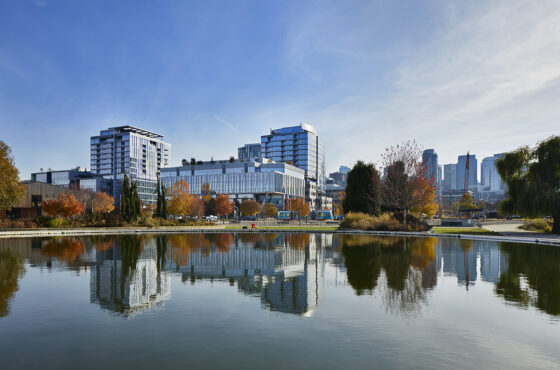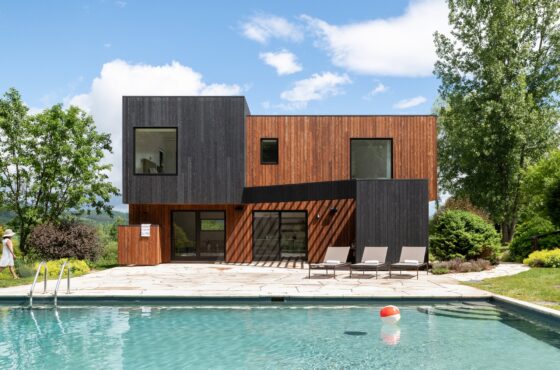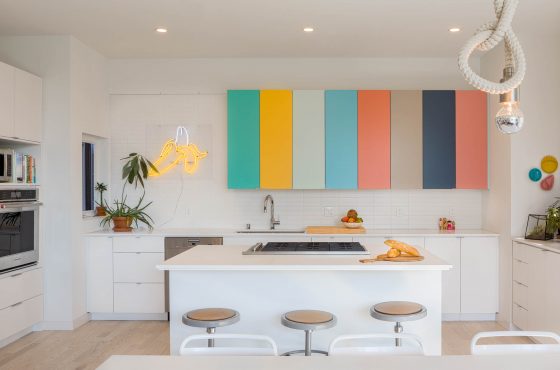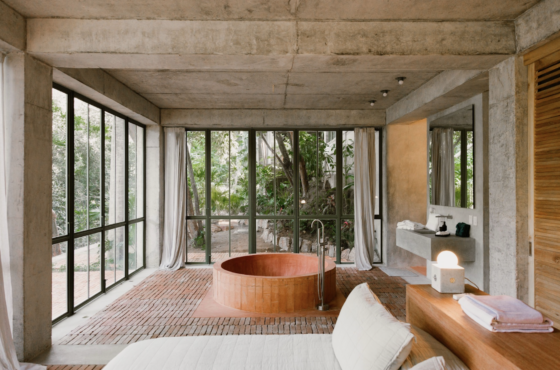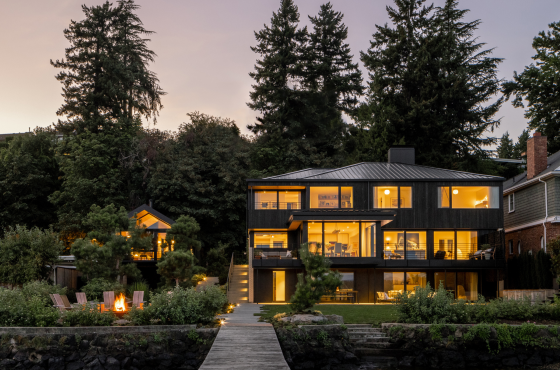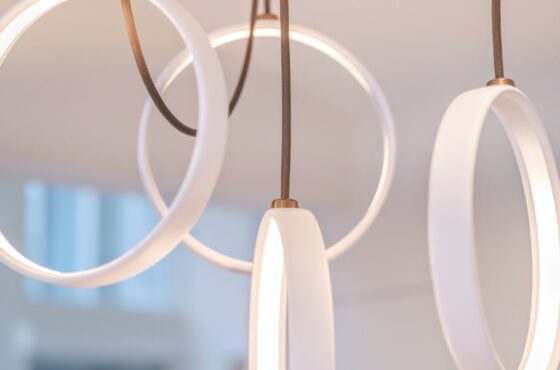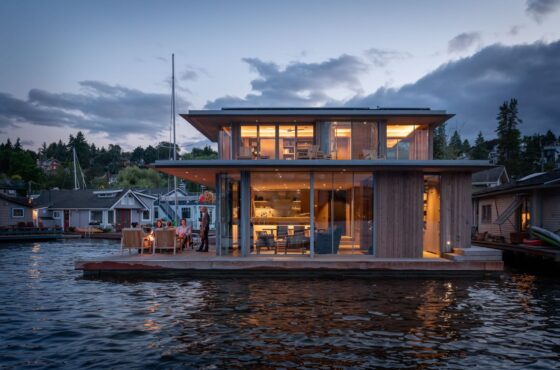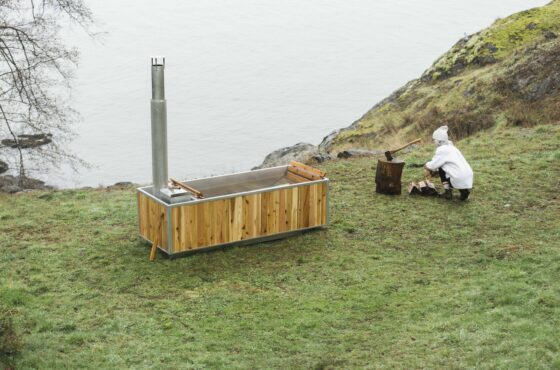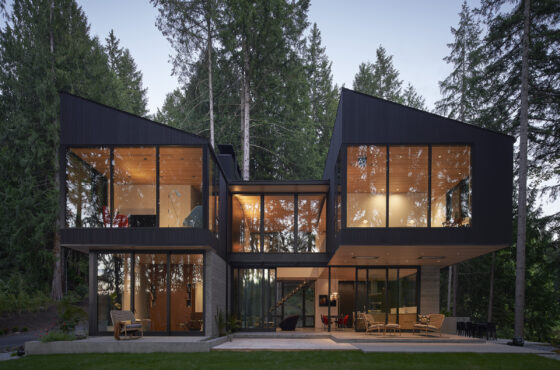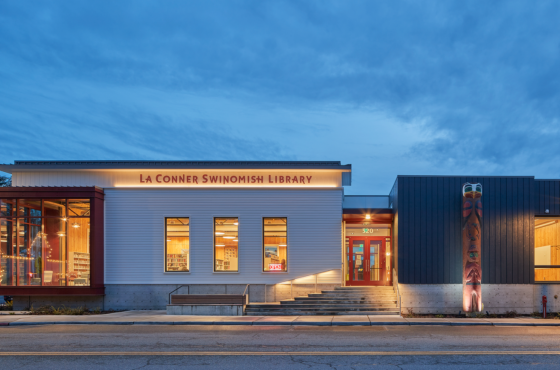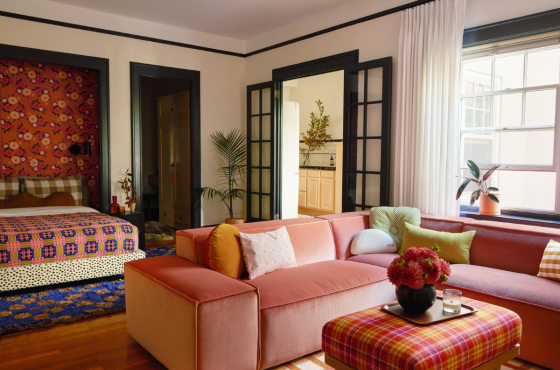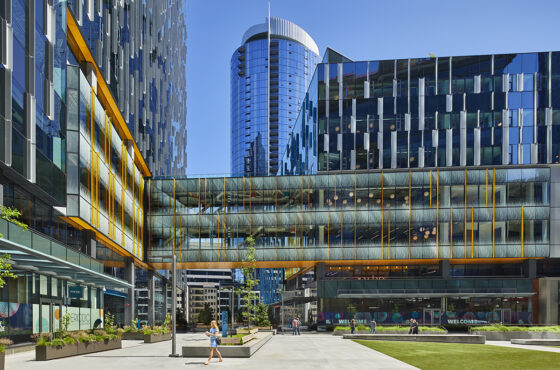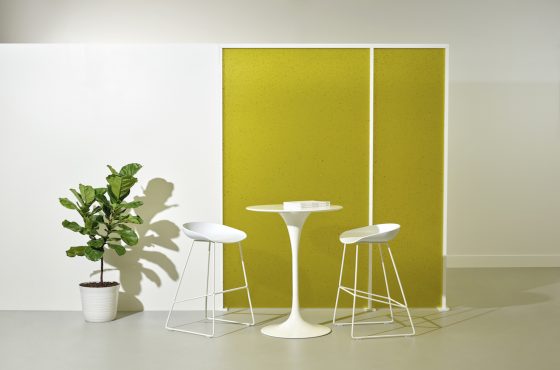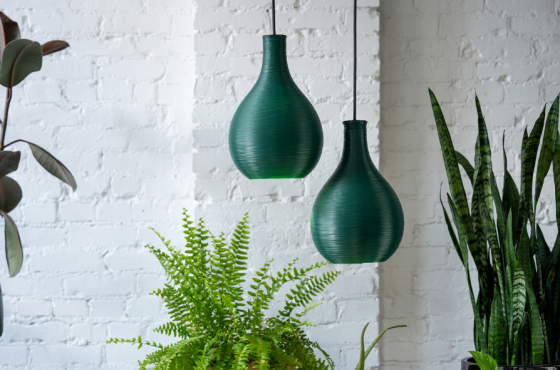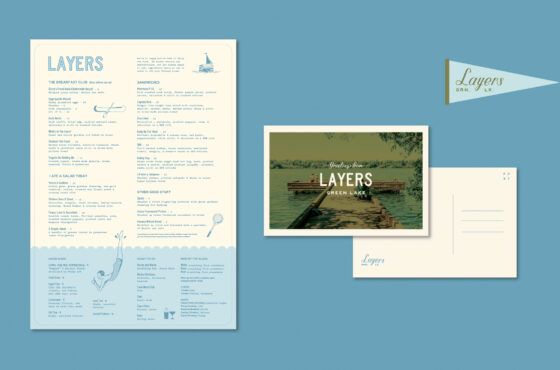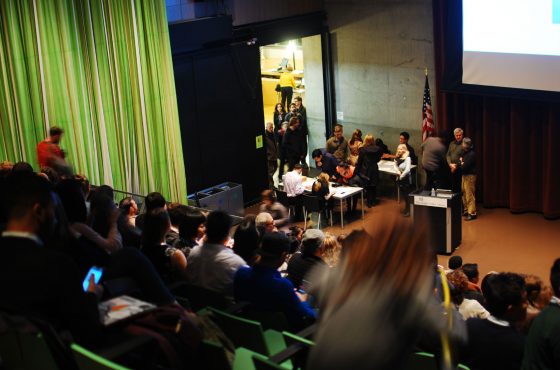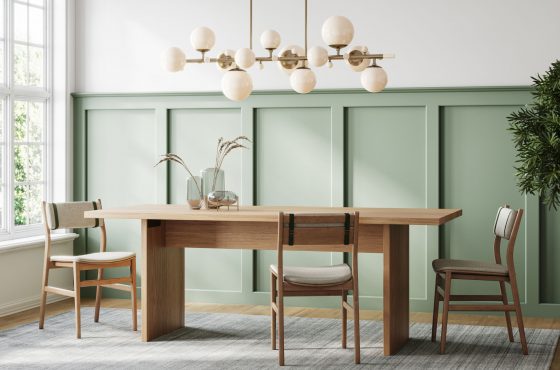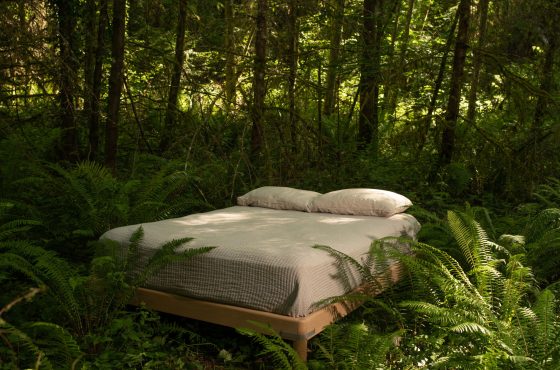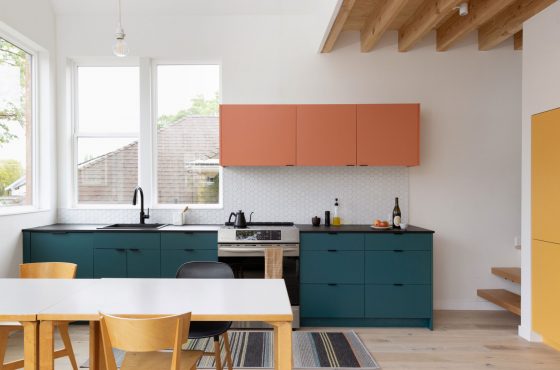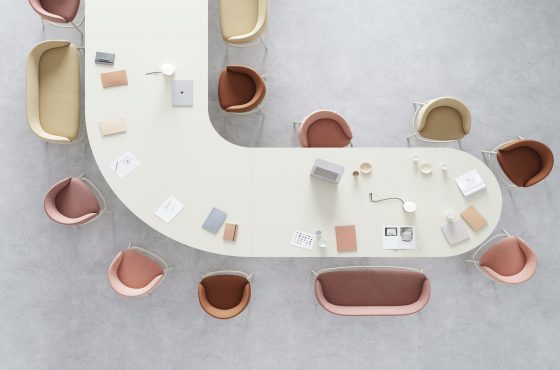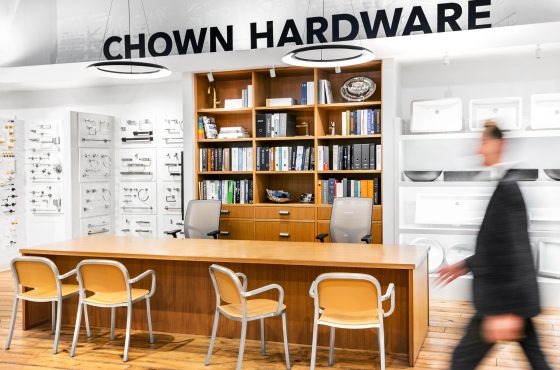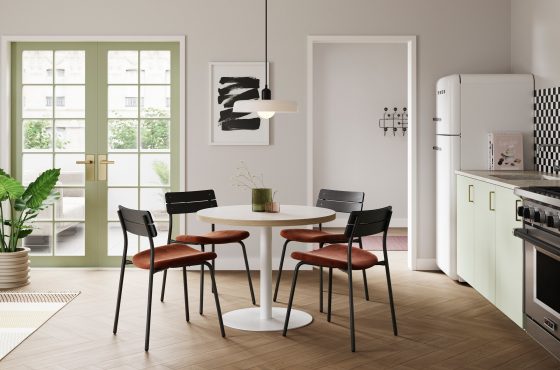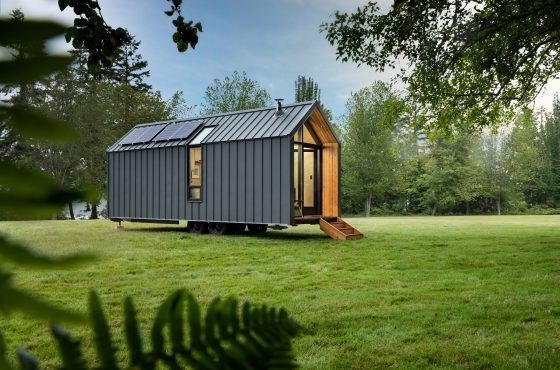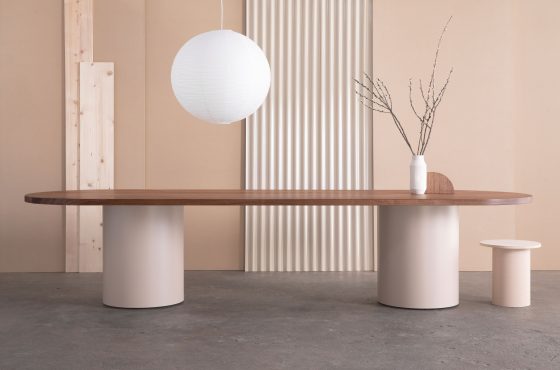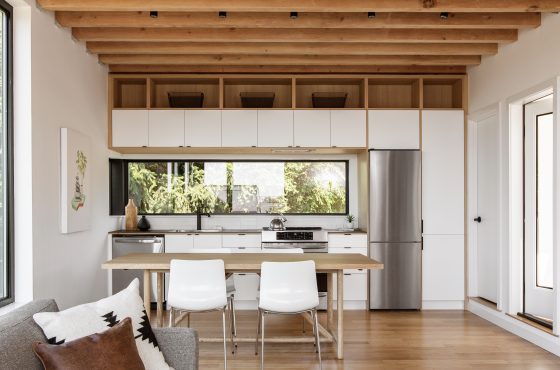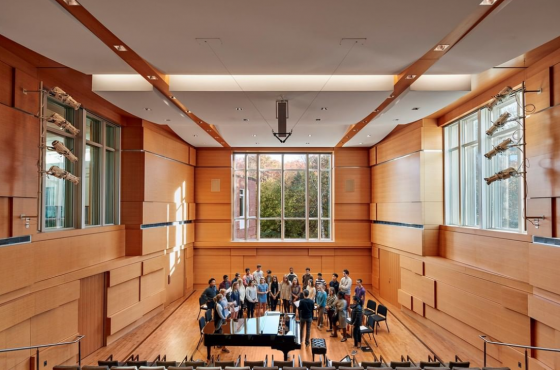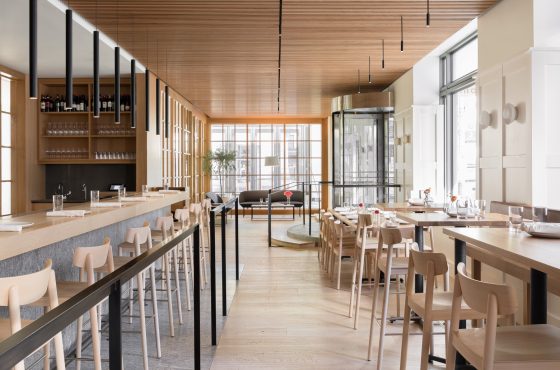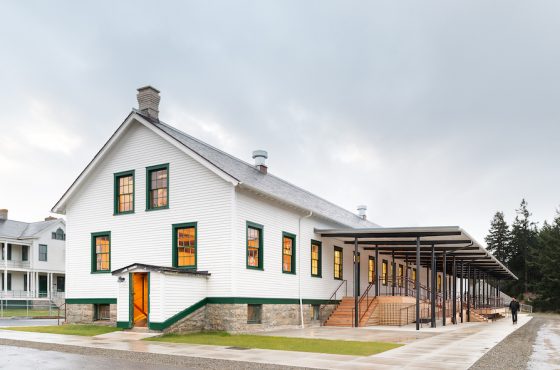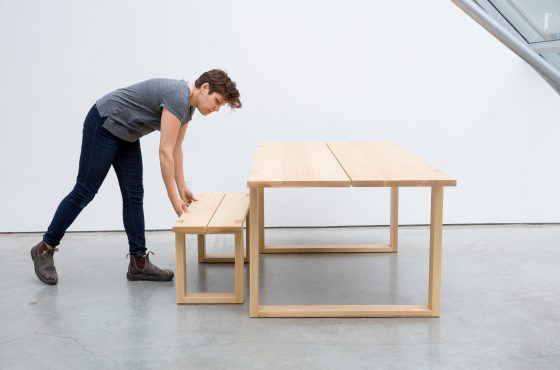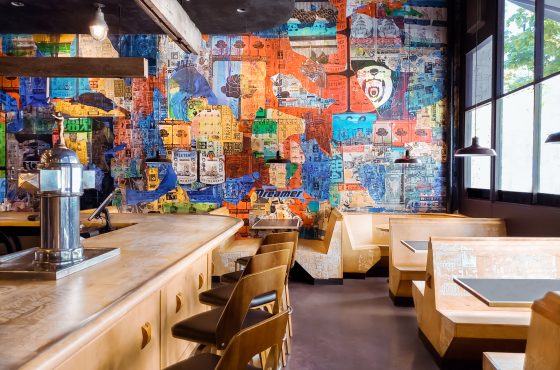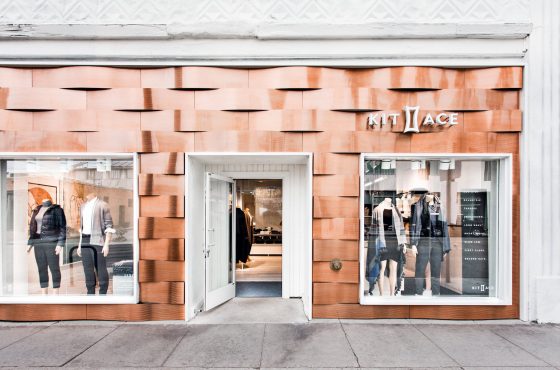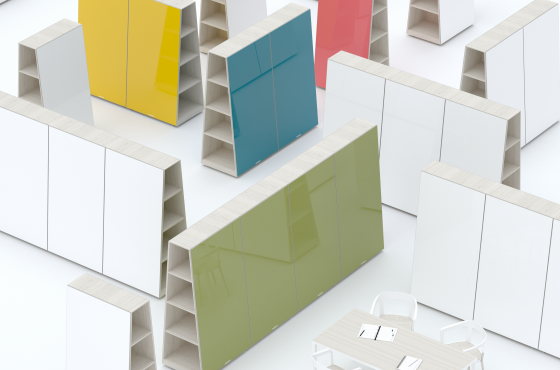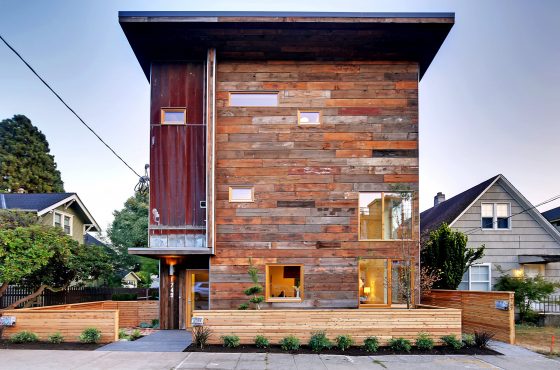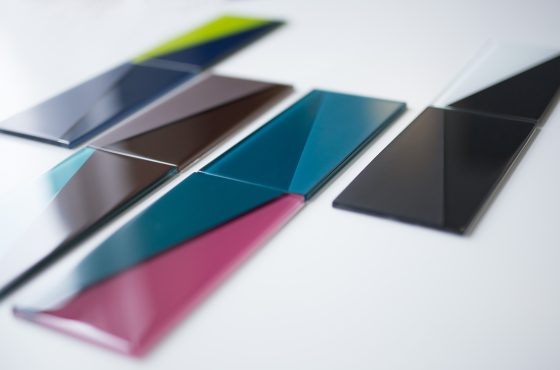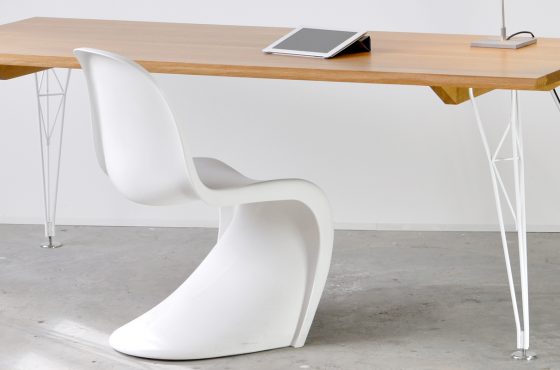Kirsten Adams, Paul Midgen, and their young daughter, Lark, had no better luck than the three bears when they washed up on the shores of Seattle in early 2018. A job offer had compelled them to abandon their dream home, a 19th-century Amsterdam canal house they had just finished remodeling to great satisfaction. They found a too-soft landing in the Mount Baker neighborhood just a couple blocks from Mount Baker Park and Lake Washington.
“It was a very cute 1914 craftsman/foursquare with loads of light, but it just wasn’t ‘The One,’” Kirsten says.
Their next stop was a nearby midcentury, also delightful. But Covid hit, and living in the small home was suddenly too hard. Then Friday, their French bulldog, needed a checkup, which created some initial confusion.
“She’s basically a mobile potato,” says Kirsten of Friday’s awkward placement on the animal-vegetable-mineral scale. “Ninety-nine percent potato,” confirms Paul, a numbers guy.
Nevertheless, the decision was made to consult a veterinarian, which took Paul and Friday to an unexplored part of West Seattle, where they crossed swords with a 1958 midcentury designed by noted architect Al Bumgardner. It was just right. The 2,360-square-foot home — known as Lark House — sat atop a cliff with sweeping views of Vashon Island, the Olympic Mountains, and Puget Sound.
“I’m the type of person who always wants their home to look like it’s ready for a photo shoot for Architectural Digest, and Kirsten’s like, ‘No dude, we have to live here.’”
“That was the beginning of the end,” Paul recalls. “It was out of our price range, but I started stalking the house on Zillow, and I don’t know if it was algorithms or what, but after a while it seemed like the house began stalking us.”
The price dipped fortuitously, but there was much work to be done. A 2005 remodel had introduced drywall, carpet, blue paint, pink granite, cherrywood, and polished nickel. There were also outdated earlier features, including a walled-off kitchen, a fire pit in the living room floor, a masculine bar, and a peekaboo into the master bedroom. Hey man, it was the ’60s.
Lost was the original intent of Bumgardner, an early master of bringing the outside in and delivering piercing light into residential interiors. The late Bumgardner, in fact, produced numerous award-winning projects, and is often credited with helping to create the “Seattle style.”
Paul and Kirsten engaged Shed Architecture and Design, which began by scanning the interior and exterior and creating a 3-D model.
“The home hadn’t been messed up in a profound way, which is always a relief,” says Thomas Schaer, Shed’s design principal. “It was lacking an identity, other than the view,” adds Kyle Keirsey, project manager.
From previous projects, Kirsten and Paul had developed a good handle on their creative differences. “I’m the type of person who always wants their home to look like it’s ready for a photo shoot for Architectural Digest, and Kirsten’s like, ‘No dude, we have to live here,’” Paul adds.
Shed split the difference with a digital mockup showing how the new design might hold up under the duress of day- to-day living — a coffee mug in the sink, a blanket draped over the sofa, a band of free-range stuffed animals. How does one design for transient clutter? By not being too precious. Architects often favor a clean, minimalist look, and “we sometimes force that aesthetic on the client,” Keirsey adds.
The digital mockup — “like moving through the house with a drone camera,” says Paul — included a painting by Seattle artist Anne Siems that the architects thought might appeal to the couple. It did, initially more to Kirsten than Paul, who later fervently repented. At a handsome cost, they commissioned Siems to produce a 70-by-70-foot work on stretched canvas that now anchors the living room. The tattoos on the woman in the painting are meaningful to the family, including Lark’s name, a bird, and a squirrel with a knapsack, which is a bit of German iconography.
The couple’s travels in Morocco inspired the low-slung, casual and comfortable sofa pit. “It’s art you can sit on. We were all hungry for some color,” says Kirsten of the Roche Bobois Mah Jong collection.

Paul’s color is orange, which he understands to be socially unfortunate. “I want to have an orange car someday, but I will probably be riding alone.” That aspiration inspired the tuck-and-roll orange leather bench in the entry. Muuto dot coat hangers complete the fun effect. For the guest powder room, Kirsten sought an intense, immersive, rich, dark, enchanted forest experience.
Paul is the cook in the family, and coveted a kitchen reminiscent of Coffee & Coconuts, a multi-level Amsterdam cafe and roastery that bills itself as a tropical island getaway “to let all the restrictions go and feel free.” The new kitchen incorporates a Nero Marquina marble island, built-in breakfast nook and hot chocolate-enabled walk-up coffee bar, one of several scenic waysides strategically located throughout the home.

From determining the best placement of hand towels to perfecting the stove vent exhaust, Paul prefers the deep end of the precision pool: “I’m still looking for and grabbing challenges that make me feel like a novice, because learning ‘til your brain hurts and overcoming big challenges with others is the spice of life.”
The best seat in the house is the loft — Lark’s perch — which integrates lively wallpaper, a piano, a swing and reading space. Paul is relieved that Lark, now 10, inherited her mother’s design sense. “She picked out the carpet. It’s not juvenile, not ‘Paw Patrol.’ And it’s got some orange in it.”
Lark’s previous playroom was a daylight basement without line-of-sight to her parents, which suited no one. Here, peekaboos allow her to monitor all the major areas of the home. A dual-faced fireplace allowed anyone in the living room to peer into the primary bedroom. The shared fireplace didn’t stretch to the ceiling, further eroding privacy.

Shed eliminated this problem with glazed brick tile and created storage with an ingenious ploy where the bedroom’s entry is a walk-in closet disguised as an unassuming paneled hallway.
This mirrors a worldwide trend. As housing costs skyrocket, architects are eliminating hallways that don’t serve dual functions.
Shed supercharged the home’s four original skylights with mirrors and battens and extended its horizon.

“One thing they emphasized was bringing the outside in, and they really did,” Kirsten says. “The color (Benjamin Moore Black Tar) on the vertical exterior siding matches the interior paneling. It’s a neat trick. You can actually forget that you’re sitting inside.”
The couple worked well together to create a unique, colorful Pacific Northwest home, Keirsey notes. “They did a good job of letting each other have their lane.”
